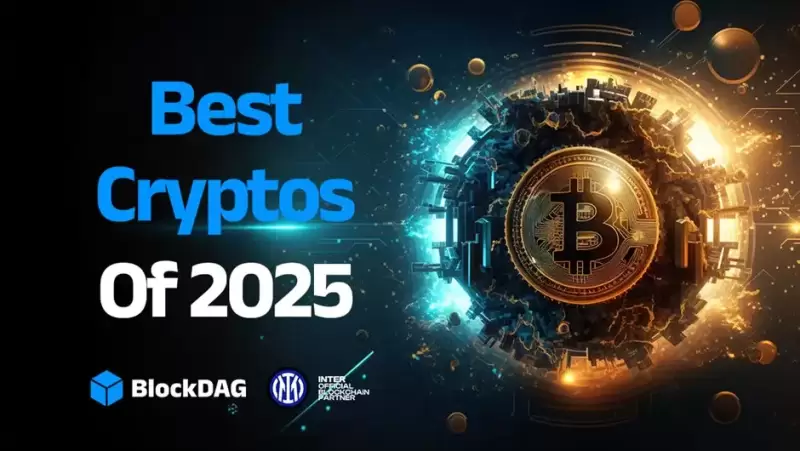 |
|
 |
|
 |
|
 |
|
 |
|
 |
|
 |
|
 |
|
 |
|
 |
|
 |
|
 |
|
 |
|
 |
|
 |
|
Cryptocurrency News Articles
Crypto Has Spent Years Betting on Layer-2 (L2) Solutions
Mar 20, 2025 at 11:28 pm
This fixation has created a tangled web of rollups, bridges and fragmented liquidity, threatening blockchain's core principles of decentralization and security.
Layer-2 (L2) solutions have been touted as a magic bullet for fixing issues with scalability in crypto. However, while they may fill the gaps at the individual level, as a movement, L2 solutions have put crypto at risk of losing all three.
The growing mass of L2s has led to a highly fractured ecosystem that is difficult to navigate and relies on complex rollups and bridging solutions. This has led to part of the ecosystem centralizing, drawing assets into fragmented liquidity silos, hindering security and stifling competition for smaller projects. These “solutions” have also introduced large-scale friction and brought unnecessary security risks.
Many L2s’ reliance on sequencers or trusted validators creates additional cracks in the armor, single points of failure, while siloed liquidity reduces validator availability for smaller L2s, threatening network resilience. These solutions also leave an immense technical challenge for developers building applications hoping to integrate with L2s, requiring in-depth and specific knowledge of the mechanics of each L2 the application may need to touch.
L2 proponents argue that these trade-offs are necessary and easily overcome, but there are even more fundamental issues here than sacrificing security, scalability or liquidity.
Crypto’s endgame is a universal network where any asset or decentralized application can instantly interact with any other in a trustless, secure way. The friction that L2s introduce, however, sabotages this instant interoperability, while the centralization of sequencers and validators undermines the fundamentals of a trustless system. It is not just that this stymies scalability in decentralized finance (DeFi), but rather that it leads toward scaling something completely different, recreating the inefficiencies of the existing siloed, fragmented and middle-man-infested TradFi system. If the goal of DeFi is to move all financial activity onchain, it is imperative to do better than what we already have.
Crypto needs to build from the foundations up. Instead of outsourcing scalability and security, blockchain networks must prioritize them at layer 1. Sharding offers a clear path forward, but the industry must set higher goals and build a long-term solution rather than just a quick fix to “band-aid” the immediate scalability problem of the day. It is not just about increasing the shard count; it is how we shard. The Beacon Chain just adds a bottleneck, and dynamic sharding is complicated, limiting scalability with massive overheads. Even intra-validator sharding seems to solve all of these problems until you reach resource saturation on the network-facing node, which has to ingest all transactions, simply kicking the can down the road in search of more validators and diminishing returns.
The obvious solution for scaling DeFi to the same capabilities as TradFi is state sharding, which is the state of the blockchain distributed across many different shards. Transactions that involve states from different shards create a temporary consensus process. The validators responsible for the transaction state communicate, agree (or not), and update the state atomically in all relevant shards. This allows transactions to be processed in parallel across multiple shards and even within shards themselves, leaving a shard’s only concern that the transactions modifying the state for which they are responsible do not have intersecting dependencies, significantly increasing throughput without compromising decentralization or accessibility.
When these shards are integrated with atomic commitment, if any part of the transaction fails, everything aborts cleanly, and there’s no work needed to untangle hanging state changes.
This is just one solution. DeFi will scale to onboard the planet. It is just a question of how soon and by what means. That said, solutions that focus on the fundamentals of L1 development rather than relying on a patchwork of L2s will eliminate fragmentation, reduce complexity, and ensure scalability and accessibility are again at the heart of blockchain networks. It comes down to the future that developers want to prioritize — tokenomics or the founding promises of Web3 — decentralization, efficiency and security.
L1 solutions are solutions for everybody. They secure the very foundation of the ecosystem for developers, traders, general users and even several billion prospective users. Without resilient and scalable architecture in the foundations, one strong push is all it will take to cause this house of cards to collapse. Of course, specific use cases might be better with L2 solutions. A high-frequency trade settlement is a perfect example, but exceptions never prove the rule. From a whole-ecosystem perspective, developers must focus on integrated, native scalability solutions instead of just adding complexity and balancing more precarious “solutions” on top. Without adequately attending to the L1, nothing but problems await.
Disclaimer:info@kdj.com
The information provided is not trading advice. kdj.com does not assume any responsibility for any investments made based on the information provided in this article. Cryptocurrencies are highly volatile and it is highly recommended that you invest with caution after thorough research!
If you believe that the content used on this website infringes your copyright, please contact us immediately (info@kdj.com) and we will delete it promptly.




























































